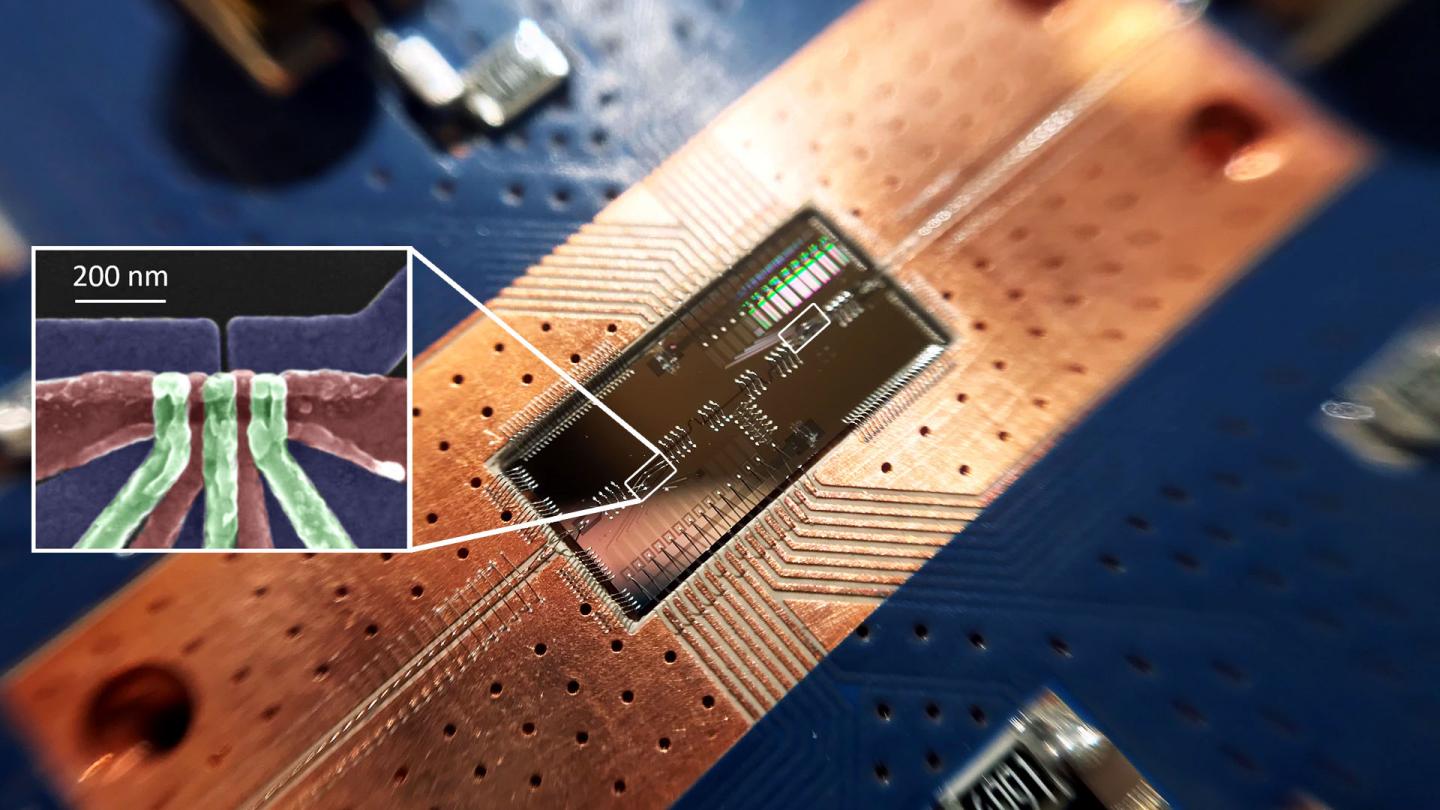By Leslie D’Monte
A team based at Princeton University has demonstrated that two quantum-computing components, known as silicon “spin” qubits, can interact even when spaced relatively far apart on a computer chip.
“The ability to transmit messages across this distance on a silicon chip unlocks new capabilities for our quantum hardware,” said Jason Petta, the Eugene Higgins Professor of Physics at Princeton and leader of the study, that was published in the journal, Nature. “The eventual goal is to have multiple quantum bits arranged in a two-dimensional grid that can perform even more complex calculations. The study should help in the long term to improve
communication of qubits on a chip as well as from one chip to another.”
Quantum computers have the potential to tackle challenges beyond the capabilities of everyday computers, such as factoring large numbers. A quantum bit, or qubit, can process far more information than an everyday computer bit because, whereas each classical computer bit can have a value of 0 or 1, a quantum bit can represent a range of values between 0 and 1 simultaneously.
To realize quantum computing’s promise, these futuristic computers will require tens of thousands of qubits that can communicate with each other. Companies that are currently displaying their quantum computing wares include IBM, Google, Microsoft, Amazon, Intel and D-Wave.
The researchers at Princeton, however, claim that while today’s prototype quantum computers from Google, IBM and other companies contain tens of qubits made from a technology involving superconducting circuits, many technologists view silicon-based qubits as more promising in the long run.
Silicon spin qubits, the researchers explain in their 25 December press statement, have several advantages over superconducting qubits. The silicon spin qubits retain their quantum state longer than competing qubit technologies. The widespread use of silicon for everyday computers means that silicon-based qubits could be manufactured at low cost. The challenge stems in part from the fact that silicon spin qubits are made from single electrons and are extremely small.
“The wiring or ‘interconnects’ between multiple qubits is the biggest challenge towards a large scale quantum computer,” said James Clarke, director of quantum hardware at Intel, whose team is building silicon qubits using using Intel’s advanced manufacturing line, and who was not involved in the study.
“Jason Petta’s team has done great work toward proving that spin qubits can be coupled at long distances.”
The communication between two distant silicon-based qubits devices builds on previous work by the Petta research team. In a 2010 paper in the journal Science, the team showed it is possible to trap single electrons in quantum wells. In the journal Nature in 2012, the team reported the transfer of quantum
information from electron spins in nanowires to microwave-frequency photons, and in 2016 in Science they demonstrated the ability to transmit information from a silicon-based charge qubit to a photon. They demonstrated nearest-neighbor trading of information in qubits in 2017 in Science. And the team showed
in 2018 in Nature that a silicon spin qubit could exchange information with a photon.
The quantum computing market is expected to reach $93 million in 2019 and $283 million by 2024, according to a report from MarketsandMarkets. A Tractica report indicates that revenues in the enterprise quantum computing market worldwide are anticipated to reach $9.1 billion by 2030.
